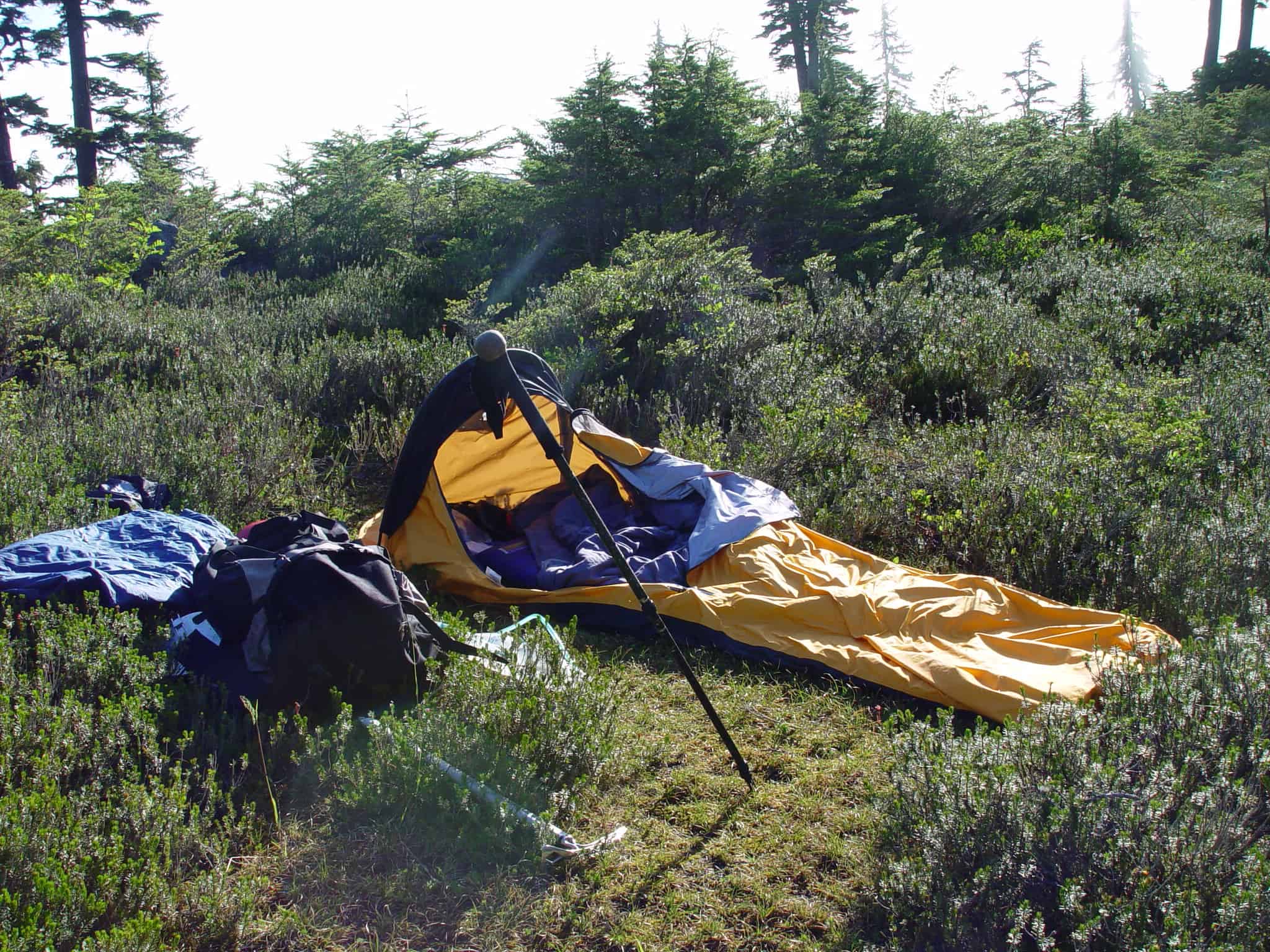Bivy camping utilizes a small fabric tent about the size of your body to protect you from the elements.
In fact, if you’ve never heard of a “bivy” bag, it helps to imagine a tent, but formed just to the shape of your body.
A bivy, which is short for “bivouac,” is a single-layer, weatherproof cover for your sleeping bag that you sleep inside.
Bivy (or bivouac) camping, is the type of camping that only uses a bivy bag. It can also refer to a type of temporary shelter, like a large tree or overhanging rocks.
When camping with a bivy bag, your temporary shelter simply becomes your bivy.
Bivy camping is excellent for hikers and mountaineers looking to keep their packs ultralight and low-volume. They are especially useful if you’re camping solo and desire a no-fuss, minimalist sleeping situation during your trip.
It’s also not uncommon for alpine climbers and hikers to carry bivy bags as a backup to their tent in case of accidents or emergencies.

